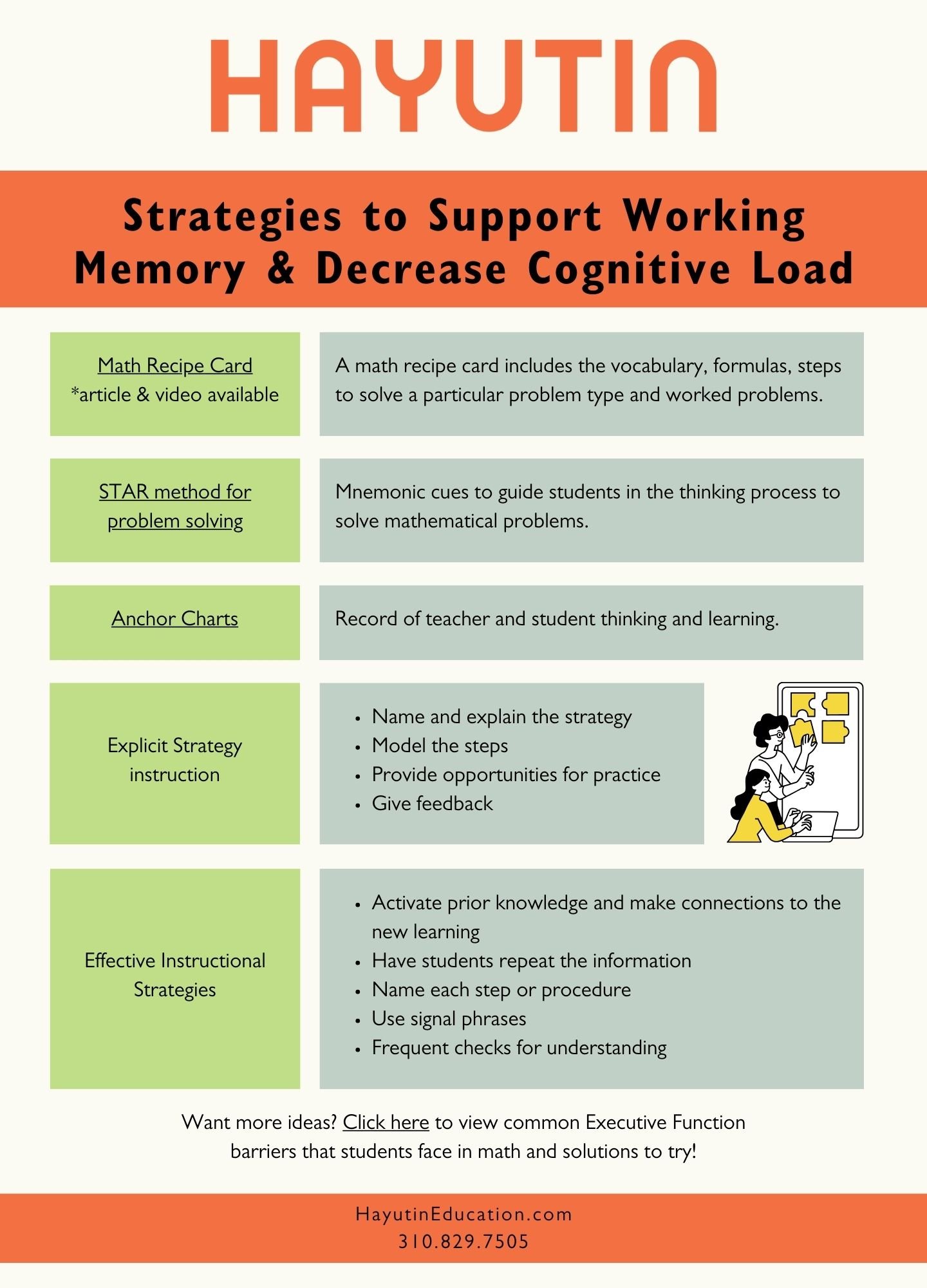HayU Blog
Executive Function in the Context of Math
May 15th, 2024
Word problems used to make many of us sweat. Remember that feeling of dread when called to the board?
It turns out we now know a lot more about the brain and why math word problems can put the hurt on us in performative moments.
How do we determine the relevant information, much less the operation to use? And what about organizing our work as we solve a multi-step computation?
Some of the challenges math students face actually stem from issues with executive functioning!
EF pioneers Dr. Peg Dawson and Dr. Richard Guare describe executive function as "an umbrella term for the management (self-regulation) of cognitive processes, including working memory, reasoning, task flexibility, and problem solving as well as planning and execution."
Their standard-setting research focuses on three core EFs. Let’s look at each of their EF Big Three in the context of a complex math problem. You’ll be surprised how much brain power is required.
Problem: Students need to calculate the area of a rectangle, then use that result to find the volume of a rectangular prism.
Here's how each executive function might come into play:
Working memory
This allows students to temporarily hold and manipulate information in their mind. They need to remember the dimensions of the rectangle and recall the formulas for calculating area and volume. They also need to hold results in mind as they move from one step of the problem to the next. Strategies like visualizing, chunking information, and using scratch paper can help offload some of the demands on working memory.
Cognitive flexibility

Inhibition

Phew, we made it through one problem. Now let’s do ten more.
In addition to these three cores, other executive function skills like planning, organizing, initiating, and self-monitoring are likely also tapped when solving complex math word problems systematically. The cognitive load accumulates across multiple problems.
Explicitly teaching executive function strategies within a math context, such as providing scaffolding and modeling the thought process, can greatly benefit students. Making the "hidden demands" explicit empowers them to leverage their strengths and supportively work on weaknesses.
Ready for your turn at the board for the next word problem? I see more hands in the air already.
Now I want to share a few tools to help our students carry that heavy cognitive load!
Resources:
Executive Function in the Context of Math


Senior Director, Hayutin





